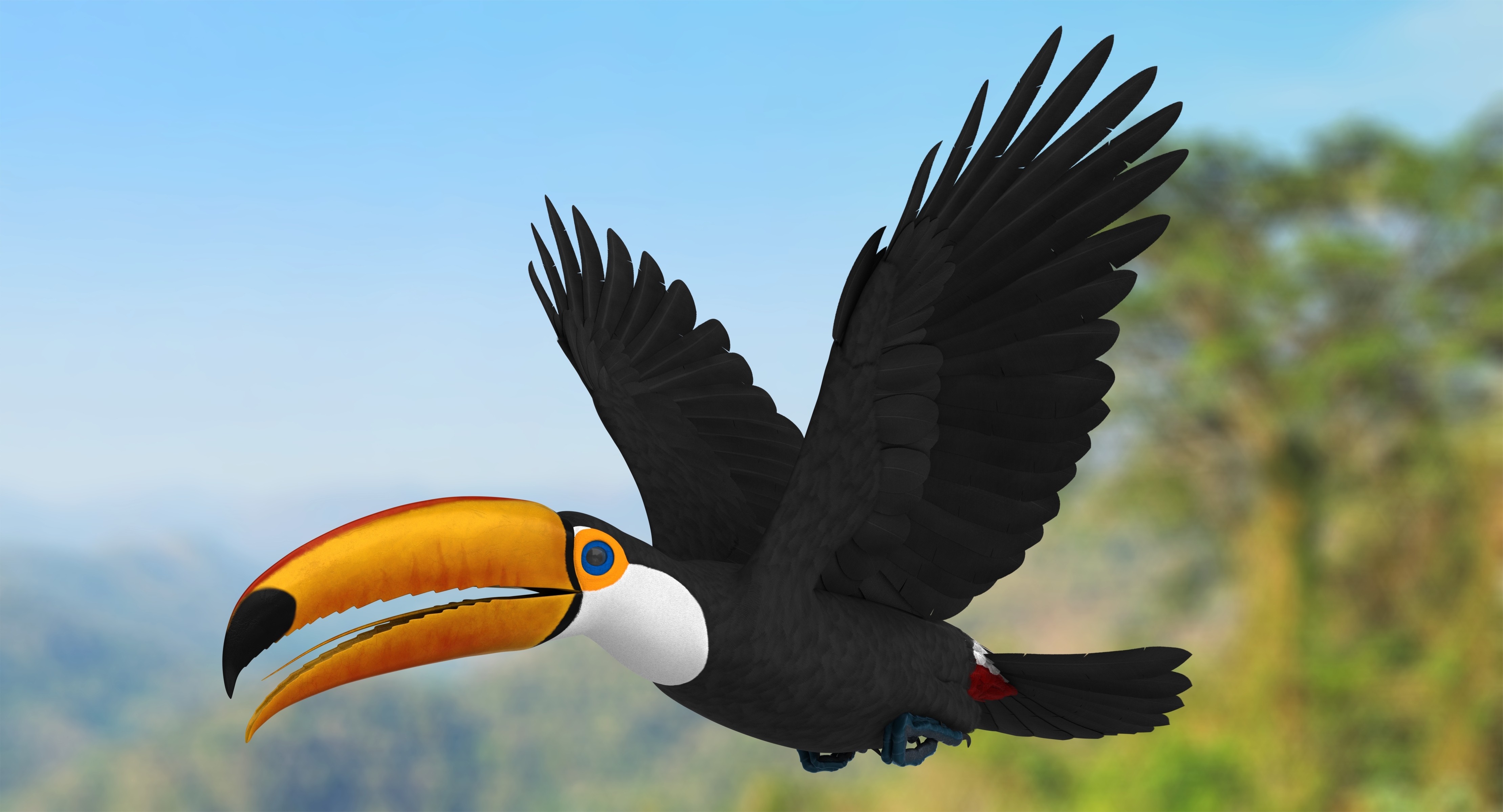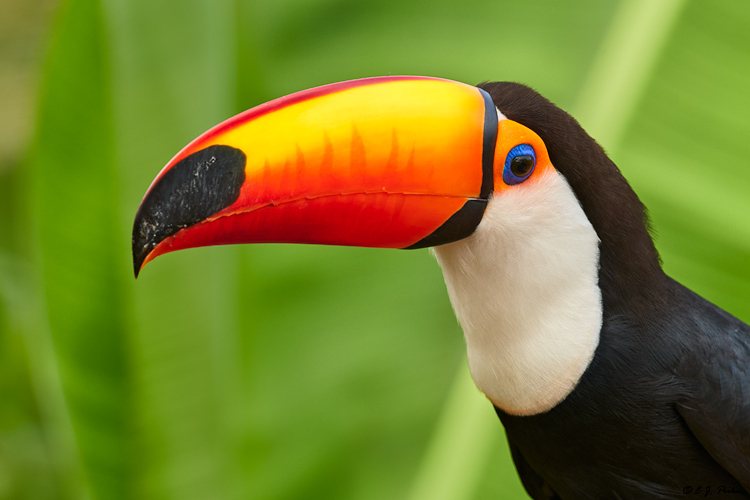

Whilst toucans are not migratory, the four species of mountain toucan move up and down the Andes mountains following the seasonal availability of food. Supplementing their frugivorous diet in this way is especially important for young birds to help them grow. Additionally, toucans plunder the nests of other birds, consuming both chicks and unhatched eggs. This is because toucans’ tails are attached to their spines via a unique ball and socket joint, so it can be flipped over their heads to take up less room while sleeping.Īlthough toucans are mainly fruit-eating birds, they will also eat insects, small reptiles and amphibians.
TOCO TOUCAN FULL
A yellow-throated toucan peering out of a tree cavityĭespite their large beaks and long tails, which measure from half to the full length of their body, toucans are quite adept at fitting into small tree cavities. Toucans nest in tree cavities, although they do not create their own holes, instead relying on those previously made by woodpeckers or created naturally by loss of tree branches. Chicks generally remain in the nest for six to eight weeks in total, during which time their initially small beak will grow almost to completion. Chicks hatch with no feathers and closed eyes, so are completely dependent on their parents until they are around three weeks old, when they open their eyes and begin to grow feathers. Toucans normally lay between two to four eggs. Despite their social tendencies, toucans are thought to be monogamous, with pairs leaving their flocks to breed in the spring and returning with their chicks once the breeding season is over. Toucans are extremely noisy birds and use a range of calls to communicate with each other, likely to signal good foraging sites or to warn of danger. Toucans are highly social and associate in flocks of 20 or more birds.

This is also the only species of toucan that is not forest-dwelling, instead being found in savannahs with open woodlands and forest patches. The largest and probably most famous toucan species is the toco toucan.

One genus is made up of medium-sized birds with multicolored plumage found in highland forests in the Andes mountains, whereas the other is made up of the largest toucans, all of which have predominantly black plumage and inhabit lowland regions. The toucans comprise two genera that are found in different habitats. Whilst one toucanet genus is made up of birds with predominantly green plumage, the other is sexually dichromatic, thus males and females exhibit different plumage colors and patterns. The toucanets comprise two genera of relatively small toucans with differing plumage. The araçaris are a genus of medium-sized toucans with colorful plumage and contrastingly patterned beaks. The toucan family of birds comprises the araçaris, toucanets and toucans, all of which are renowned for their large, colorful beaks that in some species measure more than half their body length. Toucans are a group of over forty species of colorful bird native to the forests of southern Mexico, Central America and South America. Most species ‘Least Concern’, certain species ‘Endangered’


 0 kommentar(er)
0 kommentar(er)
